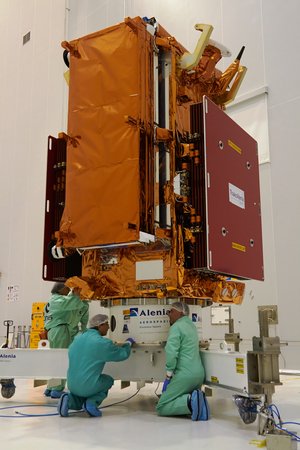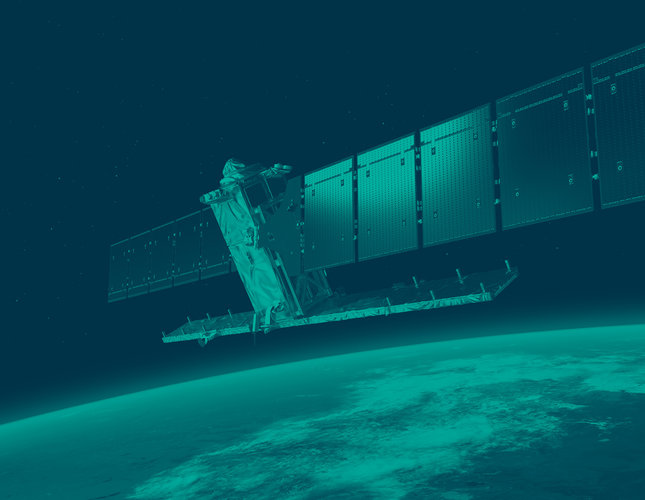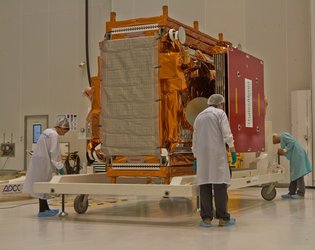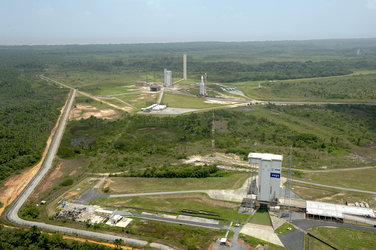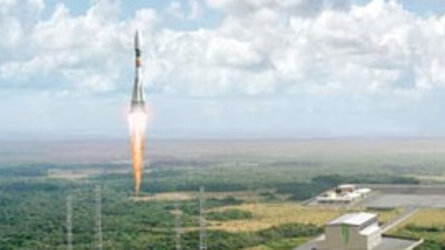Last look at Sentinel-1
As preparations for the launch of the first satellite for Copernicus continue on track, the team at Europe’s Spaceport in Kourou, French Guiana has said farewell to Sentinel-1A as it was sealed from view within the rocket fairing. Liftoff is set for 21:02 GMT (23:02 CEST) on Thursday.
Marking another milestone on the road to launch, the Soyuz rocket has been rolled out and raised on the launch pad.
Thursday’s launch will also mark a new era in Earth observation for operational applications. As meteorological satellites provide routine observations for weather forecasting, the Sentinel missions will feed environmental services through Europe’s Copernicus programme.
This first Sentinel satellite carries an advanced radar to scan Earth’s surface in all weather conditions and regardless of whether it is day or night.
It will be used to care for many aspects of our environment, from detecting and tracking oil spills and mapping sea ice to monitoring movement in land surfaces and mapping changes in the way land is used.

It will also play a crucial role in providing timely information to help respond to natural disasters and help humanitarian efforts.
For optimal coverage and data delivery, the mission is designed as a constellation of two identical satellites – Sentinel-1B will join Sentinel-1A in orbit next year.
Sentinel-1A has been at the launch site for just over a month and gone through a series of stringent tests. After being fuelled, it was joined to the Fregat upper stage rocket before being encapsulated in the fairing.
This ‘upper composite’ is now being moved to the launch pad where it will be placed on top of the Soyuz rocket in readiness for liftoff on Thursday.



